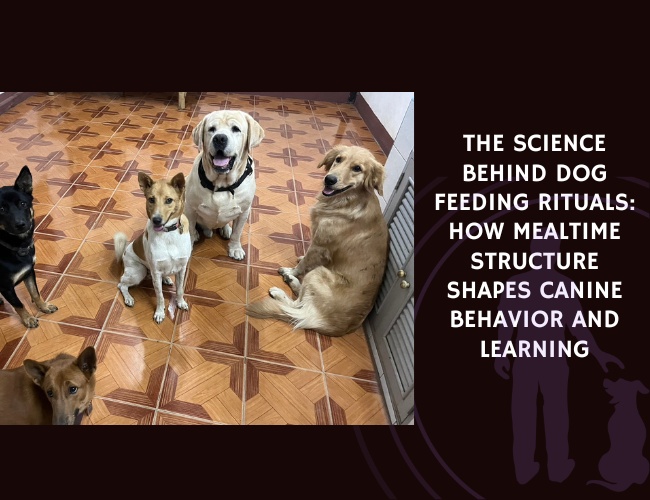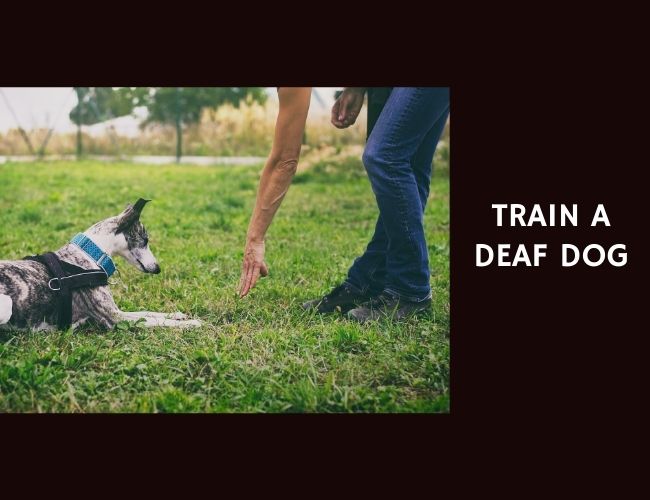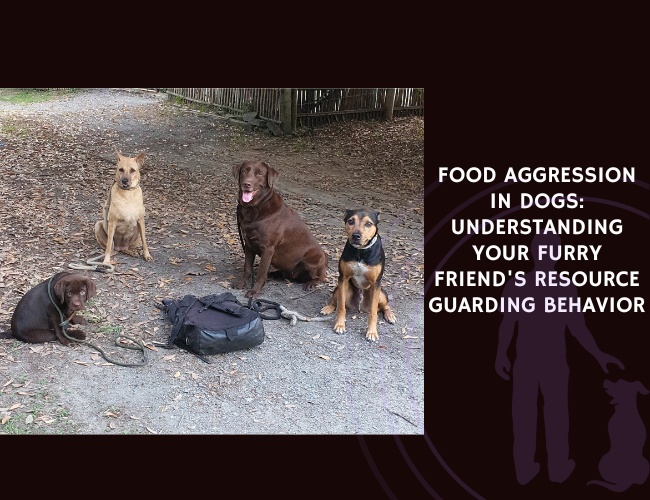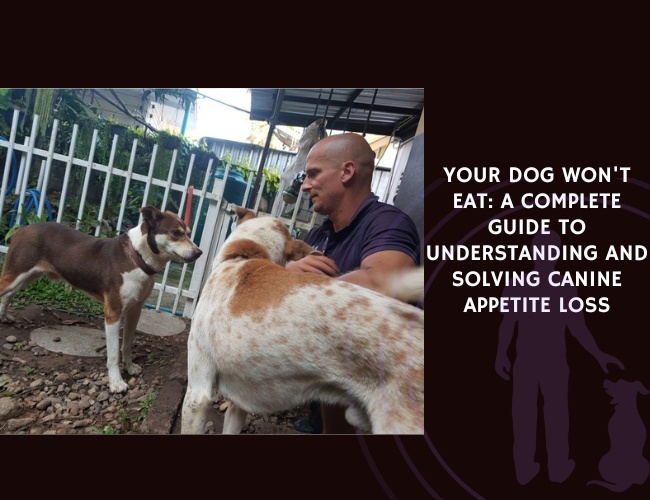Introduction: The Power of Mealtime Structure for Dogs
Why Rituals Matter to Your Dog
Mealtime is much more than simply filling your dog’s bowl. Dogs thrive on predictable routines, and the way you structure feeding times shapes their behavior in ways that go far beyond hunger and satiety. 🐶 When feeding between set times and with clear rituals, dogs begin to associate mealtime with structure, safety, and trust. This predictability gives them a sense of security and emotional stability—a foundation that supports learning, obedience, and healthy social interactions.
The Psychology Behind Feeding Protocols
Structured feeding is strongly linked to how a dog feels and behaves throughout the day. Predictable mealtimes reduce anxiety and promote calmness, thanks to the reduced uncertainty in the dog’s environment. This principle, shown in both animal and human studies, describes how clear routines buffer against stress. When a dog knows when to expect food, their behavior becomes more focused and balanced, and their stress hormone (cortisol) levels are better regulated.
Investigating the Science
Researchers studying canine behavior have discovered that these routines do more than keep dogs calm—they actually nurture learning and impulse control. Through classical and operant conditioning principles, dogs learn to wait, pay attention, and respond to cues when structured feeding protocols are applied. Daily feeding rituals are also pivotal for building secure attachments between dogs and their humans, serving as moments for positive interaction and trust-building.
A thoughtful approach to mealtime benefits your dog’s mind, emotions, and overall relationship with you. This foundation sets the stage for exploring how scheduled routines can transform different areas of your dog’s behavior and wellbeing.
The Psychology of Predictable Feeding Routines
Emotional Safety Through Routine
Predictable mealtime routines help create a sense of emotional safety for dogs. When dogs know when to expect food, their world feels more secure. This structure reduces anxiety by giving dogs clear expectations, making daily life less stressful. Unpredictable feeding can lead to restlessness, while consistent timing calms fears around food availability. Knowing their needs will be met allows dogs to relax and feel at ease in the home.
The Brain Loves Structure
Dogs are wired to thrive on routine. The structure around feeding taps into their neurological pathways that crave predictability. Scientific studies show that, much like humans, dogs experience less stress when their environment is structured and routine. This predictability helps regulate the release of stress hormones, such as cortisol, which is linked to feelings of anxiety and confusion. Lower cortisol levels result in calmer, more balanced behavior.
Stress Reduction and Hormone Regulation
Consistent feeding schedules support healthy regulation of stress hormones. When meals happen at the same time each day, dogs develop a reliable internal rhythm. This regularity helps condition the body and mind to expect calm and positive experiences during mealtime. Over time, this leads to a reduction in anxiety-driven behaviors and overall stress in the household.
Building on a Foundation of Trust
Ritualized feeding not only establishes a sense of control for dogs, but also strengthens the bond they share with owners. By providing structure and predictability, you are telling your dog, “You can trust me to care for your needs.” This simple act lays the groundwork for other positive behaviors, ultimately influencing how your pup interacts with the world around them.
As a dog’s sense of security grows through these routines, even greater behavior changes become possible.
Building Impulse Control Through Mealtime Structure
Enhancing Patience and Self-Regulation
Structured feeding helps dogs learn patience—one of the fundamental social skills for a happy home. When dogs must wait calmly for their meal, they practice self-control. This waiting time gives dogs safe opportunities to practice impulse control in a low-stress way. Over time, they learn that good things come to those who wait, which can make everyday life calmer and more predictable for everyone.
Why Waiting Matters
Asking a dog to wait before eating does more than prevent excitement around the bowl. It connects the act of waiting with broader impulse control. For example, dogs who learn to sit and wait calmly at mealtimes often show more patience in other situations, like greeting guests or waiting at the door. This skill is shaped through repetition and positive experiences each day, helping your dog transfer this calm focus to different contexts.
Practical Feeding Protocols
Implementing structured protocols is both simple and powerful. Here are a few ideas:
- Cue your dog to sit and make eye contact before lowering the bowl.
- Use a short “wait” command and only release the dog to eat when paws are still and eyes are on you.
- Gradually increase the waiting time by a few seconds; celebrate even brief improvements with gentle praise.
- For advanced training, add a simple puzzle feeder to increase the focus required before mealtime.
By consistently using these approaches, you’re teaching your dog not just to wait for food but to manage their impulses every day.
Structured feeding routines create steady ground for the next steps in your dog’s learning and behavior journey.

Addressing Problem Behaviors Through Feeding Management
Reducing Resource Guarding with Structure
Unstructured feeding can contribute to problem behaviors, especially resource guarding. When dogs are unsure when or how food will appear, they may become anxious and defensive around their bowls. This uncertainty often leads to fights over food in multi-dog homes and even guarding behavior towards people. By making mealtime predictable, you remove that anxiety. When dogs know their food will come reliably, they are more likely to relax and less likely to guard resources or become reactive during feeding.
Calming Jumping, Barking, and Attention-Seeking
Any unpredictable or chaotic feeding schedule can lead to excitement and frustration. Dogs might jump, bark, whine, or paw when food appears, hoping to grab your attention. With structured mealtime protocols, such as asking your dog to sit and wait before eating, you redirect their energy into positive behavior. Gradual increases in waiting time and using cues help your dog learn patience and calmness. As dogs successfully wait, they experience reinforcement for self-control, which carries over to other daily routines.
Real-Life Results: Case Studies
Several case studies highlight the power of feeding management. For example, a young dog who once barked and jumped at meal prep learned to sit quietly, waiting for a release word before eating. In a multi-dog household, scheduled meals and clear feeding rituals reduced food bowl tension and eliminated guarding over time. Owners noted improvements in overall calmness during non-meal times, too. These real-world examples demonstrate that structured feeding doesn’t just change mealtime—it positively impacts behavior throughout the day.
As we explore how mealtime routines tie into training and learning, more strategies emerge to build on these foundations, ensuring happier, better-behaved dogs.
Learning Principles: How Feeding Rituals Enhance Training
Conditioning At Work
Structured mealtime is more than just a feeding moment—it’s an excellent time for learning and building skills. When you repeat predictable feeding rituals, you tap into both classical and operant conditioning. Dogs quickly form strong associations between cues, such as hearing a kibble bag rustle or seeing their bowl, and the upcoming reward of food. These cues become valuable tools. By adding obedience tasks like sitting and waiting before meals, you teach your dog to link specific actions to positive outcomes, strengthening behavior through repeated reinforcement.
Feeding Schedules and Reinforcement
One of the greatest advantages of structured mealtimes is their power as reward moments. Scheduled meals make food more valuable, helping you harness meals as powerful positive reinforcement. This predictability lets you plan obedience exercises right before feeding, offering an immediate payoff when your dog follows a cue. For example, asking your dog to “sit” or “wait” before you place down the bowl teaches patience—the food itself becomes the most motivating reward, making these lessons stick quickly.
Timing Is Everything
When you control meal timing, you create the ideal conditions for learning. Dogs learn best when rewards follow behaviors closely and predictably. Scheduled feeding supports this timing, helping build strong, lasting habits. Free-feeding, on the other hand, scatters rewards throughout the day, making it tough for your dog to connect good behavior directly with food. Reliable mealtimes let you use every meal as a training opportunity and adapt the difficulty as your dog improves.
Effective feeding rituals not only improve training but also nurture key life skills like patience and focus. With a well-structured approach, you create daily moments that deepen your connection and support your dog’s learning journey, leading naturally into other methods of shaping routines and behaviors.
Temporal Anchors: Using Feeding Times to Structure Your Dog’s Day
How Mealtime Schedules Guide Daily Routines
Regular feeding times are more than just a convenience—they give dogs a framework for their day. When meals are served at the same time, your dog learns what to expect, building a sense of order and comfort. These “temporal anchors” help dogs understand the flow of the day, making transitions between activities smoother and less stressful.
Linking Mealtime with Predictable Activities
By consistently pairing pre-meal cues, like a walk or a sit command, and post-meal routines, such as crate time or a calm rest period, owners can reinforce desired behaviors. Linking these activities to mealtimes creates predictable patterns, which makes it easier for dogs to learn new skills and follow rules. This approach supports attention during training and helps reduce anxiety by reminding dogs what happens next.
The Science Behind Behavior Anchors
Structured feeding acts as a signal—and research shows such signals are key in shaping learning and obedience through classical and operant conditioning. Dogs trained with regular schedules demonstrate stronger habits and more reliable behaviors. In addition, predictable feeding times help control stress hormone levels, making dogs more resilient to changes in their environment.
When owners use mealtimes to cue and reward positive actions, they help their dogs feel secure and focused. This method supports long-term behavioral health and provides a natural structure for the day, making life smoother for both pets and owners.
Ready to see how different feeding methods impact your dog’s training progress? Let’s keep exploring.
Predictable. Patient. Peaceful.
Food Is More Than Fuel. It’s structure. It’s communication. It’s safety. Dogs don’t just eat to survive—they learn, adapt, and trust through daily feeding rituals. Done right, mealtime becomes your most powerful training tool.
Chaos Teaches Nothing.
A scattered feeding schedule creates anxiety and conflict. But when meals are timed, calm, and earned through cues, your dog learns impulse control, emotional balance, and respect. Routine isn’t boring—it’s liberating.
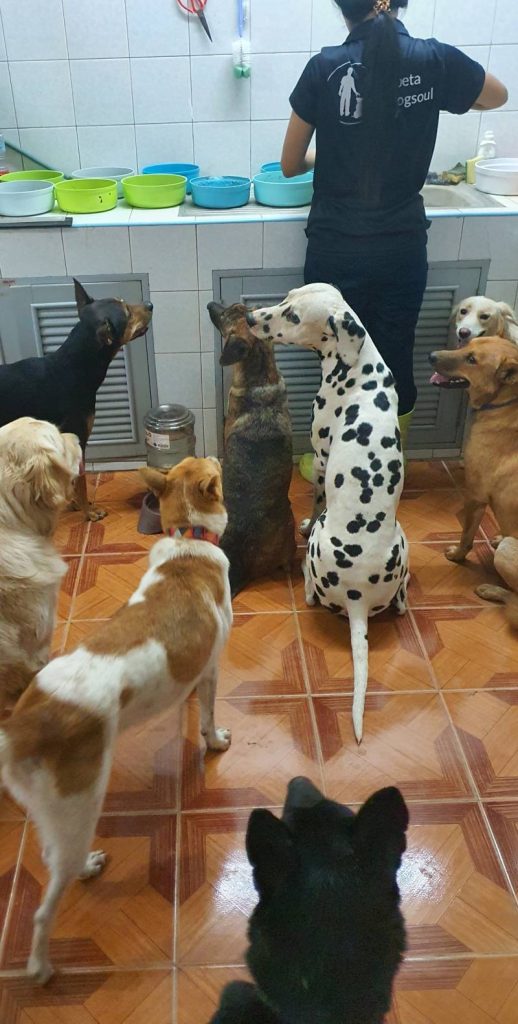


Every Bowl Is a Message.
When your dog sits, waits, and looks you in the eye before eating, it’s not just obedience—it’s trust. Rituals teach dogs what to expect and how to behave. And they teach us to lead with calm, clarity, and care.
Feeding Methods: Scheduled vs. Free-Feeding Approaches
Understanding the Two Methods
Proper mealtime structure starts with the choice between scheduled feeding and free-feeding. With scheduled feeding, you offer food at set times, usually twice per day. In contrast, free-feeding means leaving food out all day, allowing your dog to eat whenever they want. Each method impacts your dog’s behavior and learning in unique ways.
Scheduled Feeding: The Power of Routine
Scheduled feeding offers clear benefits. It helps regulate your dog’s appetite, making it easier to manage weight and digestion. More importantly, it creates “temporal anchors,” or predictable points in your dog’s day, which help them feel secure and calm. Regular meals serve as markers for routines, supporting emotional safety and reducing anxiety—especially when paired with training cues or calm-down activities.
Consistent meal times also give you control over food rewards. You can use these moments to reinforce training and desirable behavior, making learning more effective. Dogs quickly understand that calm, patient behavior leads to food, which builds impulse control and patience.
Free-Feeding: Flexibility, but Less Structure
Free-feeding can be convenient for owners with unpredictable schedules, but it often removes valuable learning opportunities. With food always available, it’s harder to use meals as rewards in training. Dogs may also develop resource guarding or fail to associate structure with food, making behavior guidance more challenging.
Choosing the Best Fit
Every dog is unique. Dogs who thrive on routines, have specific health needs, or are in training programs generally benefit from scheduled meals. However, some seniors or dogs with special dietary needs might do better with a free-feeding setup. Always observe your dog’s behavior and physical health, and consult your vet for advice.
Dogs feel most secure and learn best when their daily experiences are predictable. Simple decisions, like how and when to feed, shape your dog’s world and provide a stable foundation for growth.
Social Dynamics: How Feeding Rituals Shape Household Relationships
Establishing Social Boundaries Through Feeding
Structured feeding isn’t just about nutrition—it’s a way to create clear boundaries at home. When you serve meals at set times and expect your dog to wait patiently, you’re sending a gentle signal about your role as a leader. This helps avoid confusion and gives your dog the security of knowing what to expect. In multi-dog households, having dogs wait their turn or eat in separate areas can prevent squabbles and reduce resource guarding. These routines help lower stress and keep mealtimes calm and fair for everyone.
Less Competition, More Cooperation
Predictable mealtimes make a big difference in homes with more than one dog. By establishing a routine where each dog gets their own bowl and space, you limit food-related competition. This reduces the chance of bickering and anxiety and can even help curb problem behaviors that often pop up when dogs feel unsure about meal access. Dogs learn to trust the process and one another, fostering better relationships and a peaceful environment 🐕🦺.
Nurturing the Human-Dog Relationship
The way you present meals also impacts your bond with your dog. When feeding is calm and controlled, dogs see their owner as a reliable provider and leader. These daily rituals teach dogs to respond to communication cues—like waiting for eye contact or a release word—which builds mutual understanding and trust. Over time, this helps your dog look to you for guidance in other areas, making teamwork and obedience easier.
Daily feeding rituals play a quiet yet powerful role in shaping the relationships you share at home. These routines keep peace between pets, reinforce boundaries, and create a foundation of trust and respect that carries beyond the kitchen.
Communication and Trust: The Language of Mealtime
Mealtime as a Communication Platform
Structured feeding rituals do more than nourish your dog—they build a unique language between you both. Dogs quickly learn to read non-verbal signals, such as eye contact and body posture, during mealtimes. When you give a cue to sit or wait, your dog learns to associate these signals with the reward of food. Over time, these regular routines teach your dog to follow visual and verbal cues, which strengthens your bond and improves cooperation within the household.
The Power of Eye Contact and Waiting Cues
Making eye contact before setting down the food bowl sends a clear, calming message. It lets your dog know you are in control and provides reassurance. Similarly, asking your dog to wait for a moment before eating encourages patience and reinforces trust. Waiting cues can include a hand gesture, a gentle verbal command, or a designated “place” for your dog to stay until released. These small moments foster impulse control, helping your dog feel calmer and more secure.
Trust Built Through Consistency
Consistent, positive feeding rituals lead to a secure attachment between you and your dog. Predictable routines reduce uncertainty, leading to less anxiety and more emotional stability. Each time you follow through with familiar signals and rewards, trust deepens. As a result, your dog is more likely to cooperate not only during mealtime but in other daily activities as well. This daily partnership sets the stage for continued learning and positive behaviors.
Regular, positive interactions at mealtime become the foundation for a confident and well-behaved dog, paving the way for new enrichment opportunities in your daily routine.
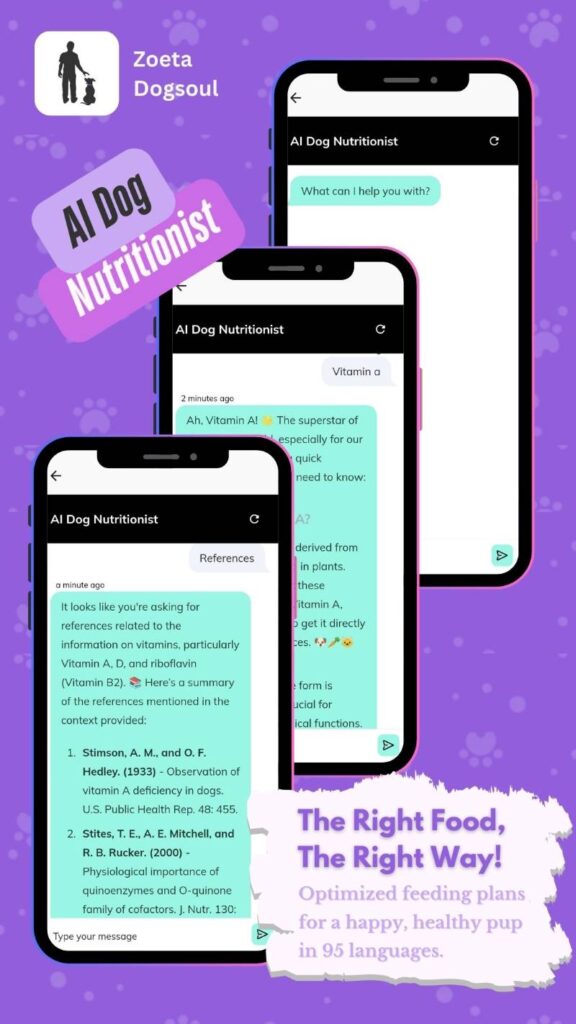
Enrichment Opportunities: Beyond Basic Feeding
Adding Mental Enrichment to Meals
Feeding time is more than just a daily necessity—it’s a chance to unlock your dog’s mind. Integrating puzzle feeders and food-dispensing toys into your routine turns a simple meal into an engaging brain game. Puzzle feeders require your dog to solve small challenges before accessing food, tapping into their natural instincts to sniff, nudge, and problem-solve. These activities promote mental stimulation, helping prevent boredom and reducing unwanted behaviors like chewing or barking.
Combining Structure with Enrichment
Structured mealtime routines pair perfectly with enrichment tools. Scheduled feeding provides predictability, while enrichment toys add excitement. When mealtimes are consistent, dogs quickly learn what to expect. Introducing a puzzle or interactive toy right before each meal signals that focused, patient behavior earns rewards. This synergy supports obedience and impulse control, as your dog learns to wait calmly and work thoughtfully for their food.
Cognitive Benefits of Working for Food
Making your dog “work” for meals does wonders for their cognitive health. Measuring, pushing, or sniffing out each piece of kibble stimulates focus and problem-solving abilities. Studies show that these enrichment strategies help regulate stress by providing achievable challenges and a sense of achievement. Over time, dogs become more resilient and adaptable—even outside mealtime—because their minds stay active and engaged through these daily rituals.
By weaving enrichment activities into structured feeding, you open the door to better focus, improved behavior, and a happier dog—setting the stage for even deeper, lasting household harmony.
Creating a Comprehensive Daily Structure Around Mealtimes
Strategies for Using Feeding Times as Anchors
We understand your need to give your dog clear structure throughout the day. Pairing regular mealtimes with other key activities creates a reliable routine. Think of meals as “anchors”—predictable events that help organize the rest of your dog’s day. For example, you might schedule short training sessions before breakfast or a calm-down period after dinner. By connecting these events to mealtimes, dogs gain confidence and know what to expect next, which supports emotional safety and reduces stress.
Extending Structure Beyond Mealtimes
A structured meal routine doesn’t just improve behavior during feeding—it shapes your dog’s attitude all day long. Dogs who know when to expect their food are less likely to feel anxious or act out. They begin to anticipate other daily activities in the same way, resulting in more cooperation and better impulse control. Consistency gives your dog a sense of control, making it easier for them to focus during walks, play, or rest periods.
Sample Schedules for a Balanced Day
Here’s how you might build a well-structured daily schedule:
- Morning (7:00 AM): Potty break, followed by a short training session
- Breakfast (7:30 AM): Structured mealtime, including waiting cues
- Post-meal: Gentle walk and play
- Midday (12:30 PM): Quiet nap or solo enrichment, such as a puzzle toy
- Afternoon (4:00 PM): Training or play session
- Dinner (6:00 PM): Structured feeding with a calm-down routine afterwards
- Evening (8:00 PM): Rest and cuddle time before bedtime
Setting up a reliable daily pattern through anchored mealtimes can help you and your dog enjoy a more harmonious and predictable life together.
Practical Applications for Dog Owners and Trainers
Step-by-Step Guide to Structured Feeding
Establishing effective mealtime routines starts with consistency. Feed your dog at the same times daily. Begin with a simple waiting cue—for example, ask your dog to sit and wait calmly before placing the bowl down. Only release them to eat after you say a clear command like “okay.” This predictability shapes patience and self-control.
Use set locations for feeding. Having a designated spot can help reduce distractions and competition, especially in multi-dog homes. Over time, gradually increase the waiting period before release, always rewarding calm behavior. Integrating a short training session before meals, such as asking for basic cues, turns feeding into a learning experience.
Troubleshooting Common Challenges
Some dogs may become restless, bark, or rush at the bowl. If this happens, pause, reset, and wait for calm. Be patient. For dogs resisting structured waits, start with just a few seconds, then build up. Dogs who guard their food may benefit from puzzle feeders or slow feeders, helping them take their time and reducing stress.
Consistency from everyone in the household is vital. Make sure all family members follow the same routine and cues, so your dog receives a clear message.
How Professionals Can Enhance Training
Trainers and behaviorists can use structured feeding to reinforce good behavior both at home and in class. Mealtime can become a natural reward marker for positive conduct, such as staying on “place” or performing requested cues. For challenging cases, trainers might combine feeding routines with calm-down protocols, crate time, or enrichment activities like puzzle toys, supporting emotional safety and stronger learning outcomes.
With structured feeding as part of daily life, you build lasting skills and deepen your bond with your dog.
Conclusion: The Lasting Impact of Feeding Structure
Scientific Foundations and Practical Value
Establishing a consistent feeding structure for your dog is more than just creating a routine. Scientific studies reveal that predictable meal times support emotional safety and lower anxiety in dogs, helping them feel secure in their environment. Structured feeding routines tap into classical and operant conditioning principles, enhancing learning and strengthening positive behaviors through clear rewards and cues. This approach aids in regulating stress hormones, like cortisol, leading to calmer and more resilient dogs.
Lasting Emotional and Behavioral Benefits
Over time, these feeding rituals build your dog’s patience and impulse control, providing important lessons in delayed gratification. By incorporating clear meal-time communication—such as waiting cues and eye contact—you foster trust and deepen your bond with your pet. In multi-dog households, scheduled feeding helps ease competition and reduces resource guarding, leading to smoother interactions. Integrating enrichment activities, like puzzle feeders during meals, boosts mental stimulation and curbs unwanted behaviors, contributing to a happier, more balanced dog.
Empowerment Through Everyday Choices
You have the power to shape your dog’s wellbeing through simple changes to their daily routine. Reviewing and improving your feeding practices—like sticking to regular times, using calm cues, and including enrichment—can address behavioral problems, support learning, and create a sense of security. Even small adjustments help build a positive home environment where both you and your dog thrive together.
By strengthening feeding rituals and routines, you set the foundation for deeper connection, clear communication, and lasting good behavior. 🐾

